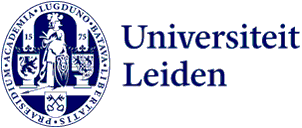Lecture | Studium Generale
Today’s experimental quantum research at Leiden University: from the microscopic to the macroscopic
- Date
- Thursday 4 April 2024
- Time
- Address
-
Kamerlingh Onnes Building
Steenschuur 25
2311 ES Leiden - Room
- Lorentzzaal
On April 4, Semonti Bhattacharyya, Kaveh Lahabi, and Bas Hensen will tell stories from their recently founded experimental research labs at the Leiden Institute of Physics (LION). They all push the boundary of what is possible within the realm of quantum physics; to better understand it, to find a basis for a next generation of technology, and even to grasp what kind of theory may lie beyond quantum physics. This evening, they will start with the tiniest of systems, looking at interactions on the atomic scale, and work their way up from there, up to systems almost visible to the naked eye.
Everyone welcome! Please register here.
Programme
Dr. Semonti Bhattacharrya - Building future electronics by quantum-tinkering atomically thin LEGOs
Present-day electronics has almost reached its limitation in terms of efficiency, miniaturization, and cost-effectiveness. Our society’s ever-increasing demand for more efficient computation requires the innovation of new disruptive and yet sustainable technologies that occupy less space, waste less energy, and use fewer resources.
The discovery of graphene (a single sheet of carbon atoms) in 2004 has introduced us to the universe of two-dimensional materials, with various novel functionalities. In this lecture, I will show how such materials can be stacked like atomically thin Lego blocks, to create ultrathin, flexible and novel electronic devices. I will also discuss the research aim of our newly established group at LION.
Dr. Kaveh Lahabi - Superconductors: Quantum marvels at all scales
What if a quantum particle was indifferent to its size? Enter the realm of superconductors, where quantum mechanics operates on micro- and macroscopic scales alike. Unlike ordinary matter, superconductors maintain their exotic quantum characteristics regardless of their size. In our research, we exploit this unique property to create and study rare quantum particles. I will also showcase the superconducting microscopy sensors developed in our lab at LION, which not only capture surface images, but also map electrical currents, magnetism, and temperature.
Dr.ir. Bas Hensen - Is there a size limit to quantum physics? Is gravity quantum?
Despite its enormous success in explaining the microscopic world, quantum physics leaves us with a big open question: should it also be used to describe objects of human-scale size and beyond? According to general relativity, heavy objects generate gravity by deforming the space-time around it. What happens if a heavy object is in a quantum superposition of being in two places at once? Is the resulting space-time also in a superposition?
I will show the experimental work we do at LION to increase the size of objects that can still be in a quantum superposition. Will we be able to reach a size where we can detect their gravity? Or does quantum physics end beyond some size or mass?
